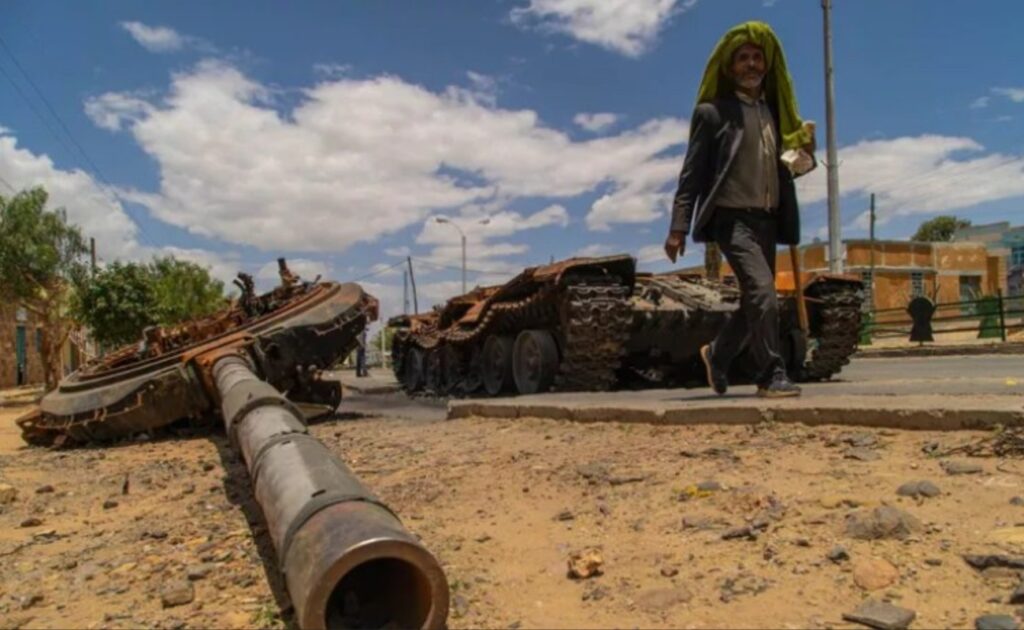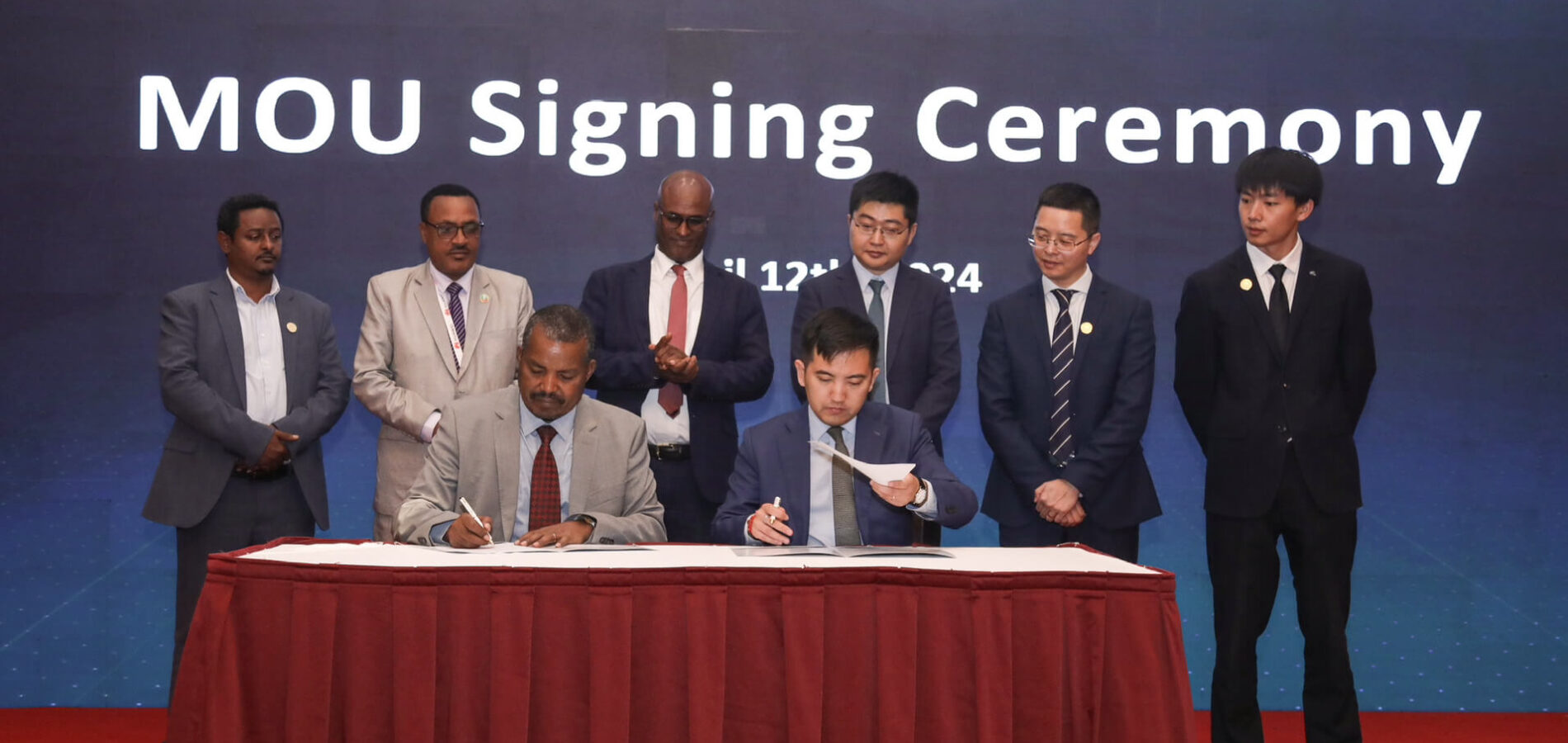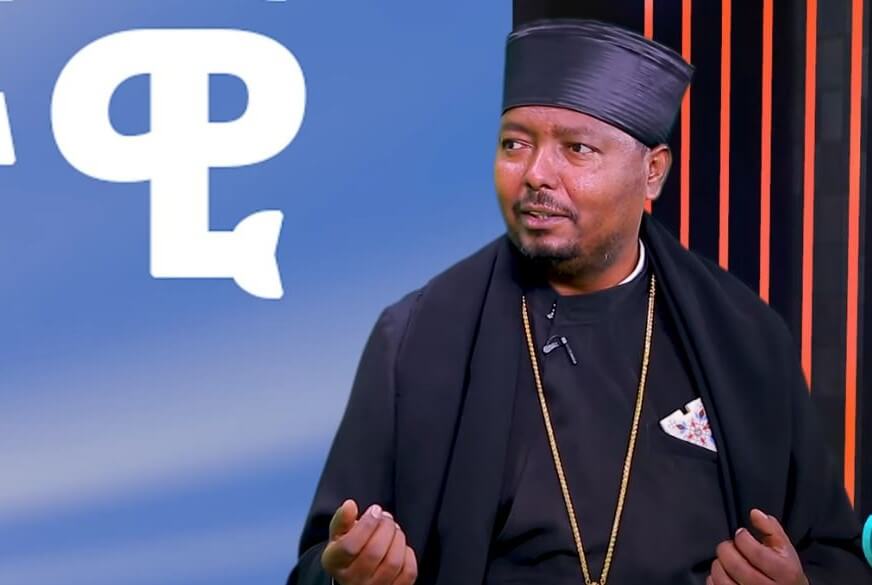Op-Ed: Manufacturing crises for the birth of a “new” dictatorship: A lesson to learn from Ethiopia’s failed democratic transition

By Milkessa Gemechu @milkessam
Addis Abeba – The news that the US lifts human rights violation designation on Ethiopia is worrying for the fact that Ethiopian conflicts did not come to an end and no one was held accountable for the war crimes, crimes against humanity, and ethnic cleansing committed as a result of the conflicts.
Ethiopia has largely been in a state of unrest, conflict, and instability since 2015 when the Oromo Protests broke out demanding major democratic transitions in Ethiopia. It means that Prime Minister Abiy Ahmed came to power as a result of the successful Oromo youth movements (2014-2018), which were later joined by Amhara youths in 2016 and caused a disagreement within the ruling Ethiopian Peoples’ Revolutionary Democratic Front (EPRDF) coalition leading to a leadership change in Ethiopia.
The major aim of the movements and conflicts was to transition the country from authoritarianism to democracy. Also, the Oromo youths raised specific demands including Afaan Oromo to be the working language of the Federal Government, reforming the federal bureaucracy to an inclusive one, transforming the image and history of Ethiopia to an all-inclusive multinational image, implementing the constitutional multinational regional self-rule, and electoral democracy, protecting human rights and fair trial, and most importantly, resolving the Oromo’s question over Addis Ababa–“a problem child of Oromia,” and to stop the prevalent land grabbing and corruptions. The former prime minister of Ethiopia, Hailemariam Desalegn resigned to create a conducive political environment that would enable the new leader to respond and resolve these fundamental questions.
However, none of these questions were resolved to date. On the contrary, in the last five years, the government of Abiy Ahmed has been busy establishing a new one-man rule. And I would argue many conflicts have been manufactured to this end. Unfortunately, a “goodbye to dictatorship” movement by nonviolent protests (2014-2018) was hijacked and the country was thrown into a devastating war. It appears that the hope for democracy is now replaced by a full-blown “new” dictatorship after a continuous cycle of crises. In this piece, I argue that the multifaceted continuous crises, violence, and conflicts that were manufactured by choices in Ethiopia were necessary crises for the birth of a new dictatorship that could postpone the birth of democracy.
Professor Joyce Hertzler writes that “dictatorship practically presupposes a condition of crisis and emergency prior to its establishment. Without the crisis, the dictatorship would be neither possible nor necessary.” Following a grenade explosion in June 2018 that struck a rally by supporters of Ethiopia‘s Prime Minister Abiy Ahmed in Addis Ababa leaving one person dead, the former intelligence and security officers who Abiy on that day labeled as “daytime hyenas” were massively purged as part of a house cleaning for the new government. I am not speculating as to who committed the grenade attacks, but the incident was definitely used by Prime Minister Abiy to crack down on former Tigrayan and Tigrayan-affiliated officials in the capital city. This was what I saw, not what I merely heard, because I was at the time, a cabinet member of the Oromia Regional State of Ethiopia.
“The government of Abiy’s personal rule embedded in the PP would need crises to emerge, establish and maintain itself. If the public readily accepts Abiy’s rule, that would be fine for him.”
The government of Abiy not only emerged in crisis, I would argue, it continues to create crises to establish its own “fresh” dictatorship that in turn depends on crisis thereby normalizing crisis politics in Ethiopia—both in the minds of the public and Property Party-led government. Just to mention a bitter witness: The first major demonizing campaign and attack against the non-violent Oromo youth movement happened following the organized violent killings perpetrated against Gamo civilians in September 2018 in Oromia’s Burayu, a town bordering Addis Ababa from the west. In order to facilitate the restoration of peace and reconciliation, I was assigned by the regional government of Oromia to lead a delegation to Arbaminch in Southern Nations, Nationalities and Peoples Region (SNNPR) and held public discussions with the elders and youths of the Gamo community, and I was successful in facilitating the youth dialogue for peace and healing.
The crime against Gamo residents in Burayu was used by Abiy’s government for three interrelated targets: 1) to damage and shadow the remarkable welcome the Oromo people made to the Oromo Liberation Front (OLF) in Finfinne, 2) to character assassinate the Oromo youths as a destructive violent force, and 3) to accuse the former president of Oromia, Lemma Megersa, of incapable to govern Oromia and sack him. Everything happened. That was the beginning of Abiy’s betrayal of Oromo democratic forces, who might challenge his political dreams.
The regional seeds of Abiy’s new dictatorial vision began to publicly germinate in Oromia in late 2018 when he stated that “his government should learn from the Tigray People’s Liberation Front (TPLF), observing that it ruled Tigray for over 27 years without any opposition, especially from within the region.” With the introduction of (1) “medemer,” Abiy’s personal political belief, now the ideological foundation of his party and government, and (2) the formation of the Prosperity Party (PP) in 2019, the conflict, instabilities, and the subsequent crises became obvious. Both “medemer” ideological discourse and the Prosperity Party are Abiy’s personal creations to fulfill his political dreams of dictatorship.
Abiy ignored the demands of the Oromo movements and began to fulfill his personal vision as he launched his medemer book and Prosperity Party in late 2019. In October 2019, following the alleged assassination attempt of Jawar Mohammed, a prominent political activist, anti-government protests reignited in Oromia resulting in 78 deaths according to official reports. Coupled with the armed conflicts that began in early 2019 in Oromia against Abiy’s vision of a new dictatorship, the crisis that the party merger of the EPRDF coalition caused reached its worst stage in 2020-22 with the war in northern Ethiopia’s Tigray, where the neighboring Eritrean defense forces and Ethiopia’s regional special forces joined Ethiopia’s National Defense Forces (ENDF) to invade.
The politico-security crises had also hit Gambella and Benishangul-Gumuz regions. Medemer and Prosperity Party were political apps that would help in the safe birth of a new dictatorship because, with the dissolution of all semi-autonomous regional parties, Abiy emerged as the sole man to dictate everything in the country through his party. Ethiopia’s state-party fused rule under the PP is much more centralized than that of the EPRDF, which was a coalition of semi-autonomous regional parties. The government of Abiy’s personal rule embedded in the PP would need crises to emerge, establish and maintain itself. If the public readily accepts Abiy’s rule, that would be fine for him. Otherwise, it was necessary to look for a new crisis such as the OLA returning to the bushes or manipulating the existing ones such as the COVID crisis as an opportunity to crash all major opposition voices.
The COVID state of emergency was declared and the election was postponed in March 2020, and Oromo-resistant singer Hachalu Hundessa was assassinated in June 2020, which the government used as a pretext to further crackdown on dissent voices and potential competitors in Oromia. The Prosperity Party held the June 2021 election unopposed in Oromia after jailing prominent political figures and opposition members. As a result, Oromia remains a tough region even for legally registered parties and activists to live in, not to mention organizing demonstrations and town hall meetings, which further pushed the Oromo youths to the last resort of armed struggle as the only viable option. Abiy’s government does not dislike manageable crises.
The war in Tigray, which broke out following the Tigray Regional State’s defiant election in September 2020, largely appeared as part of the plan for the birth of a new dictator in Addis Ababa, and the conflict was executed during the COVID pandemic crisis. After two years of the devastating war, due to the diplomatic pressures leading to third-party involvement in the peace negotiations, the government of Abiy recognized Tigray People’s Liberation Front (TPLF), and the latter also recognized Abiy’s federal rule in Tigray and disarm the Tigray Defense Force (TDF). The war in the north came to an end, according to federal officials, “with the victory of Abiy’s government”, a victory that they vowed “to repeat in Oromia” against the Oromo Liberation Army (OLA). In the words of Prime Minister Abiy Ahmed, his government’s “peace proposal has been accepted 100 percent,” a self-evident statement of a victor’s peace, which is “enforced in respect to the terms of the victorious side,” an authoritarian model of conflict management.
However, the Tanzania peace talk that rarely began between the OLA and the Government of Ethiopia was announced on May 3, 2023, to have failed to produce any hope for a negotiated peace deal. Following the failure of the peace talk, reports show that the government has resumed its battles in different parts of Oromia. Crises-exhausted people also focus on the prospect of seeing elements of peace, not democracy for now.
“Conflicts and civil wars in the country have weakened the social fabric of the society, the economy, and the state institutions of the country.”
The negotiation and peace agreement between Abiy’s government and Tigray Region has already created resentment among Amhara nationalists who backed Prime Minister Abiy’s federal war in Tigray and Oromia. The recent action by the federal government to dissolve regional special forces has exacerbated the disagreement between Abiy’s federal government and Amhara regional forces. Mass protests and in some cases, armed conflicts have been reported in the Amhara Region. In addition to its goals, the constitutionality of the dissolution of regional special forces by the federal government is something to be questioned. Be that as it may, the federal government is being accused of committing crackdowns in the Amhara region.
The conflict and crisis that began in Oromia has gradually reached every corner of the country one after the other. It means that, though with varying degrees, the birth of a new dictatorship is being felt real everywhere in the country.
Conflicts and civil wars in the country have weakened the social fabric of the society, the economy, and the state institutions of the country. The public is in desperate need of any kind of peace. Dictators are well aware of the general public’s calls for peace after all crises. Now, no one is calling for a democratic transition. No one is condemning the systematic birth of dictatorship in Ethiopia. Everyone is talking about the restoration of some elements of peace, be it victor’s authoritarian peace.
Ethiopia’s Tigray conflict was already predicted when the TPLF refused to dissolve itself to join Abiy’s Prosperity Party. Tigray election in September 2020 in defiance of the federal government’s delay of the election only served as a pretext in the political processes of the outbreak of the war. The Prosperity Party grew out of the ashes of the EPRDF, the party that the TPLF had created and once dominated.
Now, the TPLF is disarmed and Abiy’s federal rule prevails in Tigray though Eritrean forces continue to commit crimes against Ethiopians in occupied territories. The restless and war-ravaged Tigray is put under an interim regional authority, declared by the Prime Minister’s Office on 23 March 2023 to be run by Getachew Reda, as part of the November 2022 Ethiopia–Tigray peace agreement.
The Federal Government of Ethiopia established a PP-led failed transitional government for Tigray in November 2020. Thus, the relationship between the PP and the TPLF is still evolving. At the end of the current interim administration in Tigray, perhaps by the next snap regional election or national general election, the relationship between the TPLF and the PP could either transform into one of an affiliate status or TPLF could be replaced by the PP’s Tigray chapter which could cause conflicts. It shows that the political root cause of the crises in Tigray and Ethiopia is not yet addressed. The TPLF is de-listed from the terrorist designations by the Ethiopian parliament, but Ethiopia’s Election Board has declined to restore TPLF’s legal registration as a political party. Now, by any means, Abiy’s rule prevails in Tigray, the last major frontier that showed resilience in the face of an internationalized war by coalition forces for over two years.
The international community has been calling for the end of the conflicts in Ethiopia since the outbreak of the Tigray conflict. The general public in Ethiopia is also exhausted with the discourse of wars, crises, and the effects of the civil wars. Therefore, it is not surprising to see some prioritize the possibility of victor’s peace over democracy. It is true that democracy is difficult to practice in the absence of peace, but Ethiopia has never been a democracy. Leaders have always been manufacturing security crises to postpone democratic transitions.
Thus, the fundamental solution to the complicated crises in Ethiopia lies in transitioning the country to democracy, not focusing much on an authoritarian peace, which is unsustainable. Now, the thinking that Abiy would transition Ethiopia to democracy seems far-fetched. That is how crises are necessary for the gradual birth of a dictatorship. People have suffered, but Abiy’s government has temporarily emerged as the sole winning party. After the Ethiopia-Tigray negotiation, it seems that there are few potential competitors to Abiy within or without his government. Thus, presenting himself to the international community as the sole candidate, who is an optionless choice, to hold that country together by any means. I am not arguing that Abiy’s dictatorship has become an effective one. In fact, by the 2022 global fragile state index, Ethiopia is ranked number eleven, roughly a failed state.
The international community seems to have approved the end of all conflicts in Ethiopia in what seems “under the rule of Abiy.” It is rare to see a call for democratic transition, protection of human rights, accountability, and inclusive national government, except mentioning national dialogue for the rhetoric. There is little or no support for civil society and free media in Ethiopia. No one mentions the potential relevance of nonviolent youth movements, as a result of which Abiy came to power in 2018.
The democracy agenda is off the table now. It appears that the new dictatorship is being delivered with international license. A government that emerged in crisis, lived through crisis and works toward crisis should not be legitimized. The solution lies not in the birth of dark dictatorship, but in the rise of the bright sun of democracy in Ethiopia that permanently ends state-made crises. Peace talks should be inclusive and genuine and should create conducive political and security environments for democratic and free elections to determine the future nature of peace and development in the country.
The international community needs to focus on helping Ethiopians resolve their fundamental problem of authoritarianism. Unless free and democratic elections are facilitated in Ethiopia through the flourishing of civil society and free media, it is unlikely to see sustainable peace and development under a system that manufactures crises.
Editor’s Note: Milkessa M. Gemechu is a former Ethiopia’s Oromia Regional Government official and is now a visiting assistant professor of political science at Albion College (US)







